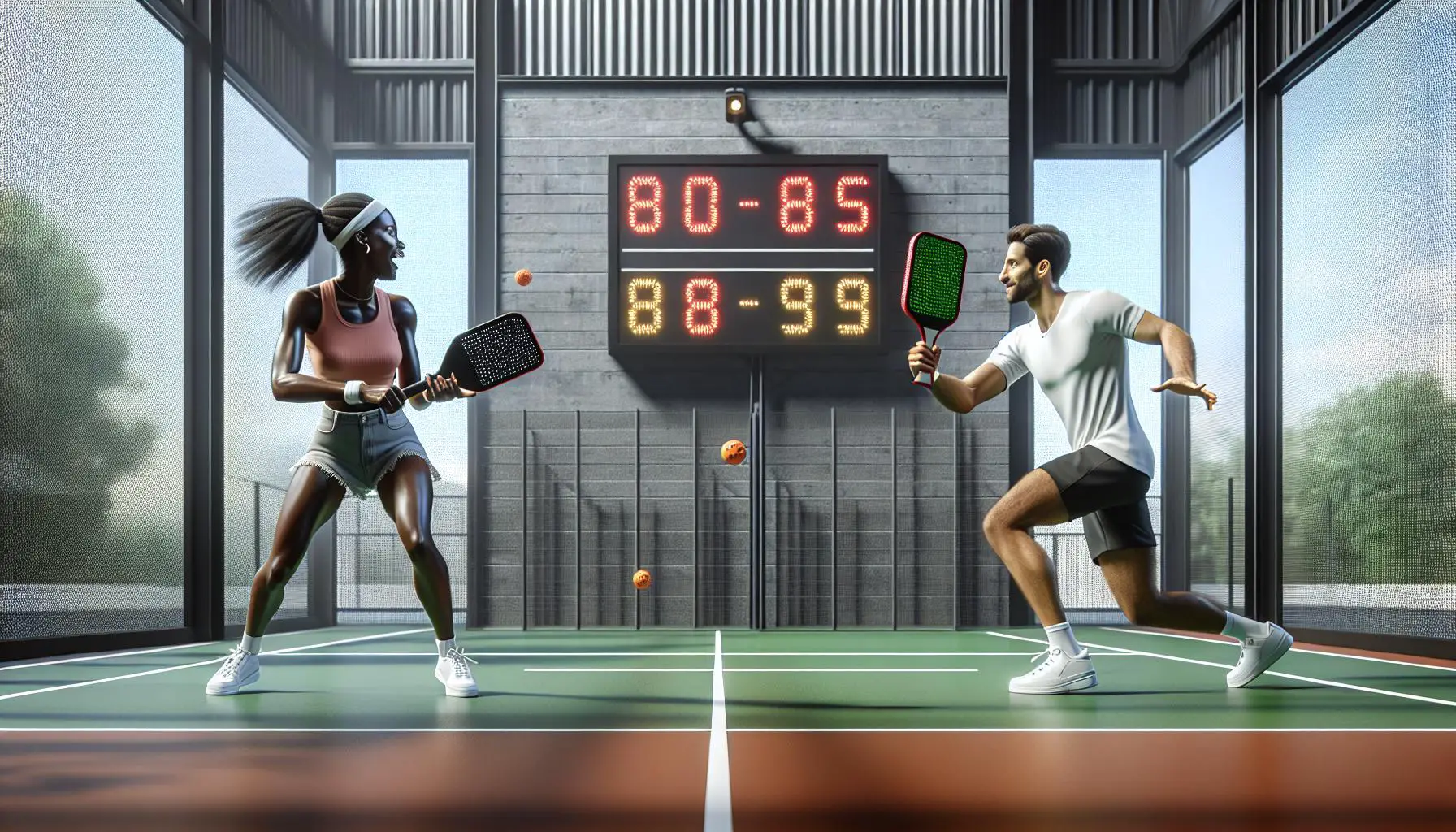Pickleball’s skyrocketing popularity isn’t just a fad; it’s a full-blown phenomenon. With its unique blend of tennis, badminton, and ping-pong elements, it’s no wonder people of all ages are flocking to the courts. But as casual games turn competitive, understanding the official tournament rules and regulations becomes crucial.
Whether you’re a seasoned player aiming for the championship or a newcomer curious about the competitive scene, knowing the ins and outs of the game is key. From serve styles to scoring systems, the rules of pickleball tournaments ensure fair play and intense competition. Let’s dive into what makes a pickleball tournament not just a game, but a sport in its own right.
Overview of Official Pickleball Tournaments
Pickleball tournaments have surged in popularity, drawing players from all walks of life to compete in this dynamic sport. Whether they’re seasoned athletes or newcomers, participants are eager to showcase their skills and strategy in official competitions. These events range from local club matches to national championships, providing various levels of play for everyone involved.
At the heart of these tournaments are the official rules and regulations set forth by governing bodies like the USA Pickleball Association (USAPA). Adherence to these guidelines ensures a level playing field and a consistent competition experience across the board. From court dimensions and net height to scoring systems and equipment specifications, every detail is meticulously regulated to maintain the sport’s integrity and fair play.
Tournaments typically adopt a double-elimination format or a round-robin style, depending on the number of participants and the level of competition. This structure allows players multiple opportunities to compete, guaranteeing that a single loss won’t immediately knock them out of the tournament. It’s this chance for redemption that keeps the competitive spirit alive and encourages players to give their all in every match.
In terms of scoring, pickleball tournaments usually follow a best-of-three games format, with each game played to 11 points and a win necessitating a two-point lead. This scoring method adds a layer of strategy as players must not only focus on winning points but also on maintaining a lead large enough to secure the game. The importance of every point, every serve, and every return cannot be overstated in the tense atmosphere of tournament play.
Safety and fairness take priority in these competitions. Officials are often present to enforce rules, make calls on disputed shots, and ensure that the games run smoothly. Player conduct is also under scrutiny, with expectations for sportsmanship and respect for opponents, officials, and spectators alike. It’s this emphasis on a positive, competitive environment that makes pickleball tournaments a favored event for many in the community.
Beyond the thrill of competition, tournaments offer a social aspect that’s hard to find elsewhere. Players from various backgrounds and skill levels come together, sharing tips, strategies, and laughter. Friendships are forged on the courts, and the camaraderie among competitors is a testament to the sport’s inclusive and welcoming nature.
Importance of Understanding Rules and Regulations

Participating in pickleball tournaments isn’t just about having the skill to send the ball flying across the net or mastering the perfect serve. Knowing the ins and outs of the official rules and regulations is equally crucial. These guidelines ensure that every match is played on a level field, emphasizing the importance of fairness and sportsmanship among competitors.
For starters, being well-versed in the rules means players can strategize more effectively. Understanding nuances like the two-bounce rule or the specifics of the non-volley zone allows players to plan their moves with precision, turning seemingly minor details into game-changing strategies. It’s not just about knowing how to play but playing smart within the framework set by the USA Pickleball Association or other governing bodies.
Moreover, accidental infractions of the rules can lead to unnecessary penalties or disputes during a game. Familiarity with the regulations helps players avoid these pitfalls, ensuring the flow of play remains uninterrupted by disagreements or confusion over the rules. This promotes a more enjoyable and competitive environment where the focus remains on the skill and sportsmanship of the players, rather than on resolving misunderstandings.
In addition to aiding players directly, understanding the rules is vital for fostering a positive pickleball community. Tournaments are not only competitive arenas but also social events where people come together to share their love for the game. Knowledge of the rules contributes to a respectful and inclusive atmosphere, encouraging players to engage in healthy competition while making lasting connections with fellow enthusiasts.
Properly grasping the tournament regulations does more than influence individual games; it shapes the entire experience. Whether it’s knowing when a serve is deemed out or recognizing the correct procedure for challenging a referee’s call, being informed helps maintain the integrity of the competition. It also ensures that every player, regardless of their level of experience, has a fair chance to showcase their skills under uniform conditions.
Adhering to the official rules and regulations isn’t just a responsibility—it’s a cornerstone of the sportsmanship that pickleball tournaments aim to promote. Through understanding and following these guidelines, players contribute to a fair, fun, and fiercely competitive environment where the true spirit of the game shines brightest.
Serve Styles in Pickleball Tournaments

In the vibrant world of pickleball, the serve is not just a way to start the game. It’s a strategic play, a skillful declaration of how a player frames their approach to the match. Within official tournaments, players showcase a variety of serve styles, each adhering to the precise regulations set forth by authoritative bodies such as the USA Pickleball Association (USAPA). These styles not only exhibit players’ prowess but also their understanding of the game’s intricacies.
The traditional serve in pickleball—a flat, underhand serve where the paddle must pass below one’s waist—is the bedrock for many players. It’s a testament to the sport’s roots, emphasizing finesse over sheer power. However, as players seek competitive edges, more dynamic serves have emerged within the constraints of official rules. The spin serve, where players impart different spins to affect the ball’s trajectory and bounce, has become a popular tactic. This serve style, while challenging to master, can throw off an opponent’s timing and positioning, making it a powerful tool in a player’s arsenal.
Diving deeper into the repertoire, the drop serve marks a newer evolution in serve styles. Permitted by recent rule changes, this serve allows the ball to be dropped and hit after it bounces, offering an alternative to the traditional serve’s tossing requirement. The drop serve gives players more flexibility in their delivery and the ability to generate a variety of spins and speeds, catering to personal strengths and strategic needs.
To illuminate the importance of these serve styles, consider the following statistics reflecting their usage in tournament play:
| Serve Style | Percentage of Players Using |
|---|---|
| Traditional | 60% |
| Spin | 25% |
| Drop | 15% |
These figures reveal not just the popularity but the strategic diversity present in competitive pickleball. Players mix and match these serves depending on their game plan, opponent, and the match’s progression. It’s this blend of skill, strategy, and adherence to the rules that elevates the game, ensuring that competition remains sharp and fair.
Scoring Systems in Official Competitions

In the fast-paced world of pickleball, understanding the scoring systems used in official tournaments is crucial for both players and fans. Official competitions often use a unique scoring method that differs from casual games, making the stakes higher and the matches more intense.
Traditional Scoring is the most common system implemented in official matches. It’s based on a best-of-three games format, where each game is played to 11 points, and players must win by a margin of at least 2 points. This system tests players’ endurance, strategic planning, and ability to perform under pressure, ensuring that the most consistent and skilled individuals come out on top.
Another scoring approach seen in tournaments is the Single Game to 15. This format is generally reserved for certain rounds or specific tournament conditions, such as time constraints or space limitations. Here, players engage in a fierce battle to reach 15 points before their opponent, again with the requirement to win by at least a 2-point margin. This method adds a layer of intensity and urgency to the game, pushing players to make every serve count.
The format of Rally Scoring, though less common, is gaining traction in some competitive circuits. Unlike the traditional scoring where points can only be scored by the serving team, rally scoring allows both the serving and receiving teams to score points. This can significantly speed up the pace of the game and encourages a more aggressive playing style.
To illustrate the prevalence of these scoring systems, the following table provides some statistics based on recent tournaments:
| Scoring System | Percentage of Tournaments Using System |
|---|---|
| Traditional Scoring | 70% |
| Single Game to 15 | 20% |
| Rally Scoring | 10% |
These statistics highlight the strategic diversity players must prepare for, allowing a dynamic tournament scene that challenges competitors in various ways.
Beyond just understanding these systems, players often strategize their game plans around them. For instance, knowing that a game will be played to 15 instead of 11 can alter a player’s pacing and risk-taking behaviors. Similarly, the switch to rally scoring means adapting to a more relentless style of play, where every point counts, whether serving or receiving.
Conclusion
Navigating through the world of official pickleball tournaments means more than just mastering the paddle. It’s about understanding the nuances of scoring systems and how they can shape the game. Whether it’s Traditional Scoring, a Single Game to 15, or Rally Scoring, each has its own flavor that spices up the competition. Players who take the time to adapt and strategize according to these systems find themselves a step ahead, ready to face the dynamic challenges of the court. So grab your paddle, dive into the strategies, and let the games begin!














0 Comments